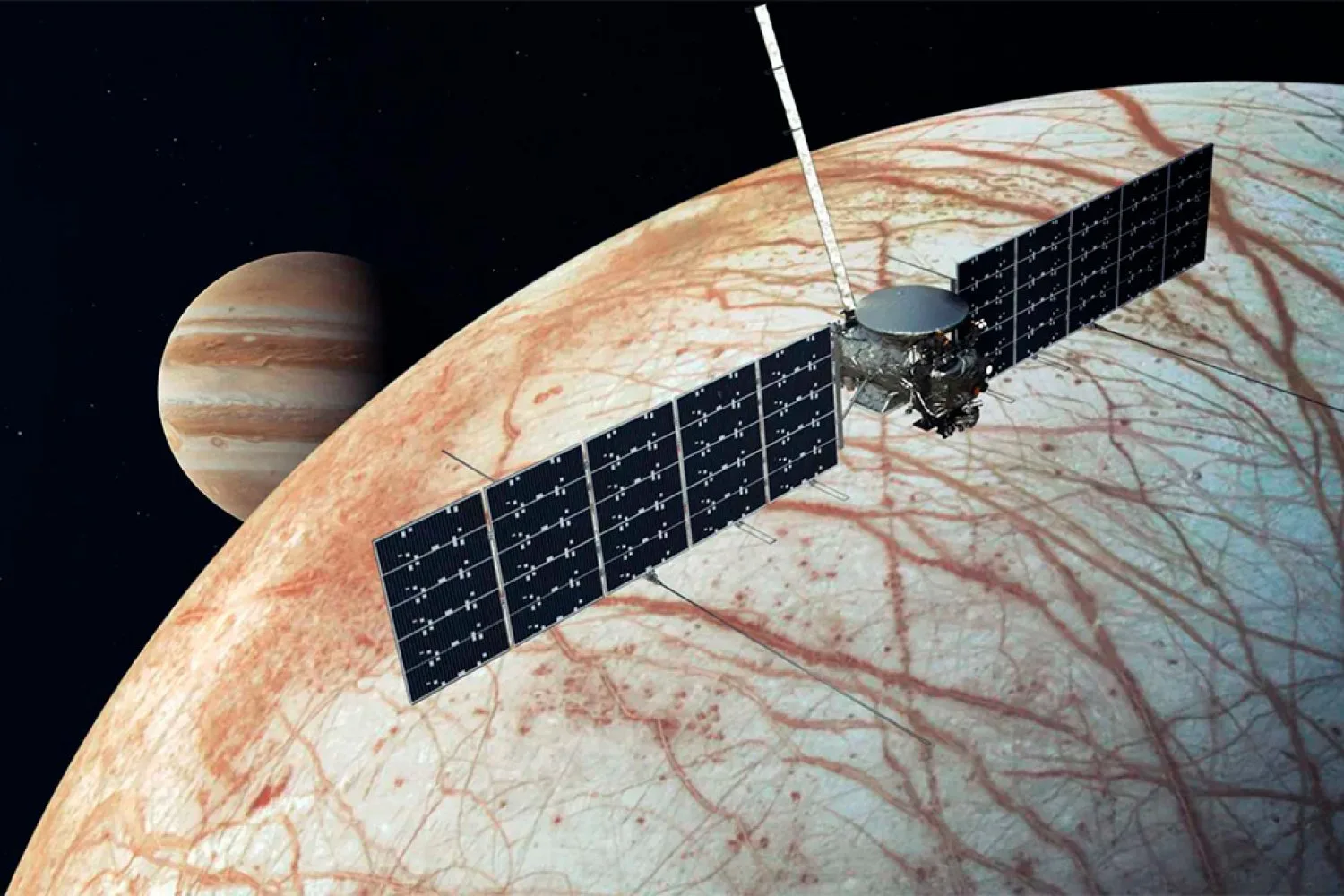A remarkable discovery has been made by astronomers from MIT, the University of Liège, and other institutions: a new planet is orbiting a small, cold star located just 55 light years away. This fascinating planet, known as SPECULOOS-3b, exhibits Earth-like characteristics in size and rocky composition; however, it likely lacks an atmosphere entirely.
In a recent publication in Nature Astronomy, the researchers officially confirmed their detection of SPECULOOS-3b, identified through the efforts of the SPECULOOS (Search for Planets EClipsing ULtra-cOOl Stars) project, which employs a network of telescopes.
This newly identified planet orbits an ultracool dwarf star, a type of star that is significantly smaller and colder than our sun. Ultracool dwarfs are believed to be the most common stars in our galaxy, yet they also present challenges for observation due to their dimness.
The dwarf star that hosts SPECULOOS-3b is about one-tenth the size of the sun and 1,000 times dimmer. It bears more resemblance to Jupiter and has a surface temperature approximately half that of our sun. Nevertheless, the proximity of SPECULOOS-3b—completing an orbit in just 17 hours—results in a staggering amount of energy radiating onto its surface. A year on this new planet lasts just a fraction of a day by Earth’s standards.
Due to its close orbit, SPECULOOS-3b experiences 16 times the radiation that Earth receives from the sun, which has likely stripped away any atmosphere it might have had, transforming it into a bare, blistering rock.
If the planet is indeed devoid of an atmosphere, scientists anticipate that they will soon be able to analyze the surface composition and geological processes that shaped it. This includes examining whether the planet underwent volcanic activity, magma ocean formation, or tectonic movements in its past.
Julien de Wit, a study co-author and associate professor of planetary sciences at MIT, commented, “SPECULOOS-3b is the first planet for which we can begin constraining surface properties beyond our solar system. This discovery allows us to advance into exoplanetary geology. How exciting is that?”
The research team from MIT includes scientists Benjamin Rackham and Artem Burdanov, along with lead author Michel Gillon from the University of Liège, and numerous colleagues from participating institutions worldwide.
Gathering Clues
The first hints of this new planet emerged in 2021 when the SPECULOOS network—a set of six robotic, 1-meter telescopes (four in the Southern Hemisphere and two in the Northern Hemisphere)—began monitoring the sky for planets orbiting ultracool dwarf stars. SPECULOOS builds upon the discovery of seven potentially habitable terrestrial planets around the star TRAPPIST-1 through the TRAPPIST (TRAnsiting Planets and PlanetesImals Small Telescope-South) survey.
Focusing on 1,600 nearby ultracool dwarf stars, the SPECULOOS initiative hopes to detect more planetary systems. Since these stars are smaller, planets crossing in front of them block a more significant portion of their light than those transiting larger, brighter stars, thereby providing clearer observational opportunities.
In 2021, the SPECULOOS network detected some inconclusive signs of a planet transit around an ultracool dwarf star approximately 55 light years away. A year later, a closer examination using MIT’s Artemis telescope lifted the veil on the discovery.
“The 2021 observations showed some uncertain structures; however, the clear transit signal in the 2022 Artemis data captured our attention,” stated Artem Burdanov, who oversees the SPECULOOS Northern Observatory. “Once we recognized this signal, we initiated a focused observational campaign, and everything fell into place.”
A Moonlit Scenario
With data from MIT’s Artemis telescope, the SPECULOOS network, and additional observatories, the team confirmed the presence of a planet orbiting the dwarf star every 17 hours. Based on the light it blocked, the scientists determined that the planet is roughly the size of Earth.
Using analyses of the starlight conducted by MIT’s Benjamin Rackham, the team estimated various properties of both the star and the planet. “Our spectral analyses reveal that the star has approximately 2,800 kelvins, is around 7 billion years old—not too young, not too old—and has moderate activity, indicating frequent flares,” Rackham explained. “We conclude that the planet must lack an atmosphere, which would have been eroded by the persistent flaring of its host star.”
So, what would the view be like from SPECULOOS-3b? “Without an atmosphere, the sky would be stark and dark, resembling the surface of the moon. The ‘sun’ would appear as a large, purplish-red, spotted star, roughly 18 times bigger than our sun as seen from Earth,” offered Rackham.
Due to the planet’s lack of atmosphere and close proximity to us, SPECULOOS-3b is an exceptional candidate for further observation by NASA’s James Webb Space Telescope (JWST). The powerful instrument might allow scientists to analyze the star’s light and unveil detailed information about both the star and the planet. Through these observations, the researchers hope to identify features of the planet’s surface, marking a groundbreaking step in exoplanetary science.
“We believe that SPECULOOS-3b is almost as hot as Venus, making it uninhabitable,” Rackham noted. “While it may not have a lava surface, it is composed of solid rock. Depending on the reflectivity of the rock, it might have been reshaped by volcanic activity or erosion from space weathering, giving it a darker surface. Our future studies should enable us to reveal exciting possibilities regarding the planet’s geology.”
This groundbreaking research received support from various organizations, including the European Research Council, the Simons Foundation, and the Heising-Simons Foundation.
Photo credit & article inspired by: Massachusetts Institute of Technology



